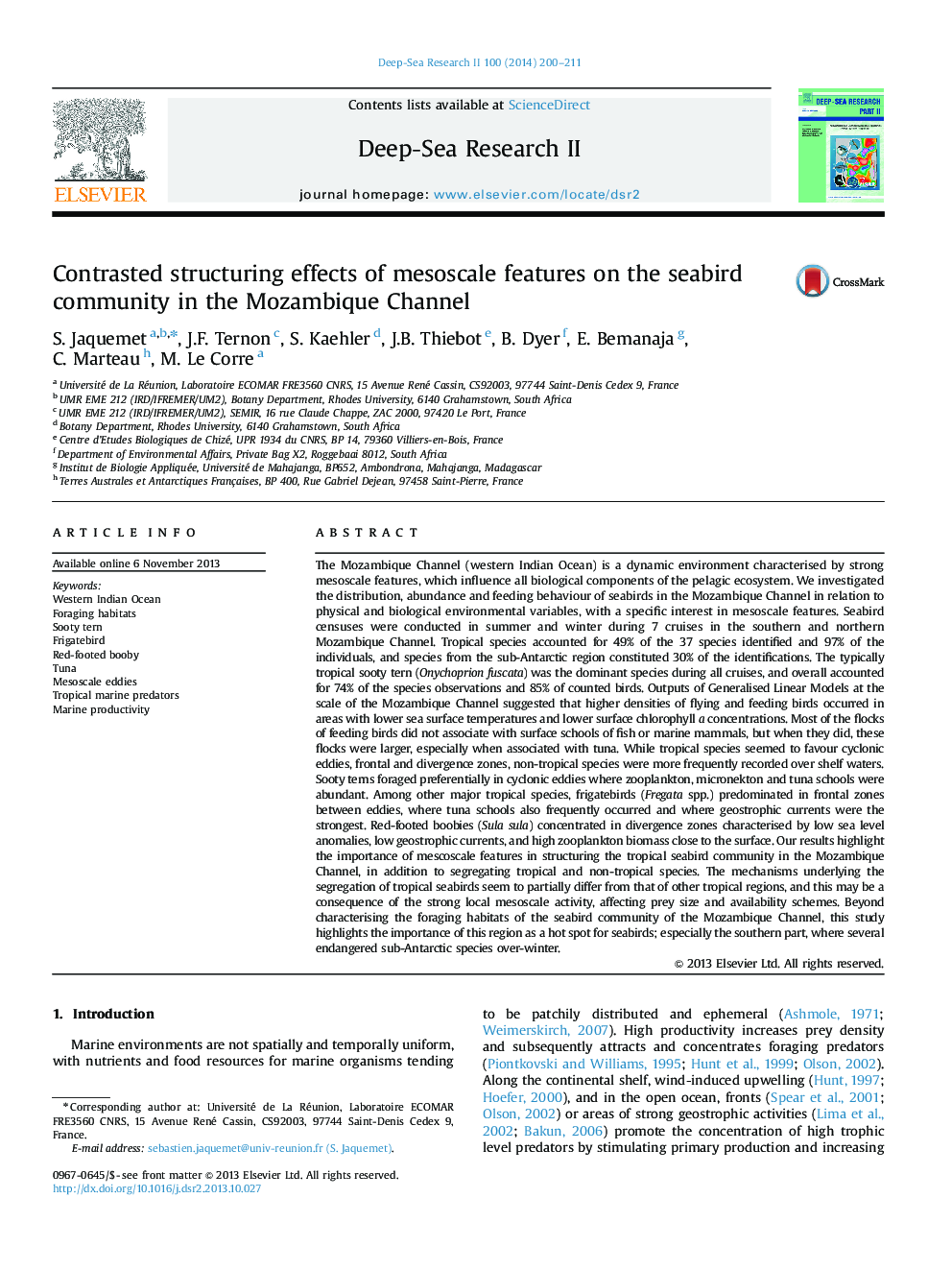| کد مقاله | کد نشریه | سال انتشار | مقاله انگلیسی | نسخه تمام متن |
|---|---|---|---|---|
| 4536438 | 1626440 | 2014 | 12 صفحه PDF | دانلود رایگان |

The Mozambique Channel (western Indian Ocean) is a dynamic environment characterised by strong mesoscale features, which influence all biological components of the pelagic ecosystem. We investigated the distribution, abundance and feeding behaviour of seabirds in the Mozambique Channel in relation to physical and biological environmental variables, with a specific interest in mesoscale features. Seabird censuses were conducted in summer and winter during 7 cruises in the southern and northern Mozambique Channel. Tropical species accounted for 49% of the 37 species identified and 97% of the individuals, and species from the sub-Antarctic region constituted 30% of the identifications. The typically tropical sooty tern (Onychoprion fuscata) was the dominant species during all cruises, and overall accounted for 74% of the species observations and 85% of counted birds. Outputs of Generalised Linear Models at the scale of the Mozambique Channel suggested that higher densities of flying and feeding birds occurred in areas with lower sea surface temperatures and lower surface chlorophyll a concentrations. Most of the flocks of feeding birds did not associate with surface schools of fish or marine mammals, but when they did, these flocks were larger, especially when associated with tuna. While tropical species seemed to favour cyclonic eddies, frontal and divergence zones, non-tropical species were more frequently recorded over shelf waters. Sooty terns foraged preferentially in cyclonic eddies where zooplankton, micronekton and tuna schools were abundant. Among other major tropical species, frigatebirds (Fregata spp.) predominated in frontal zones between eddies, where tuna schools also frequently occurred and where geostrophic currents were the strongest. Red-footed boobies (Sula sula) concentrated in divergence zones characterised by low sea level anomalies, low geostrophic currents, and high zooplankton biomass close to the surface. Our results highlight the importance of mescoscale features in structuring the tropical seabird community in the Mozambique Channel, in addition to segregating tropical and non-tropical species. The mechanisms underlying the segregation of tropical seabirds seem to partially differ from that of other tropical regions, and this may be a consequence of the strong local mesoscale activity, affecting prey size and availability schemes. Beyond characterising the foraging habitats of the seabird community of the Mozambique Channel, this study highlights the importance of this region as a hot spot for seabirds; especially the southern part, where several endangered sub-Antarctic species over-winter.
Journal: Deep Sea Research Part II: Topical Studies in Oceanography - Volume 100, February 2014, Pages 200–211